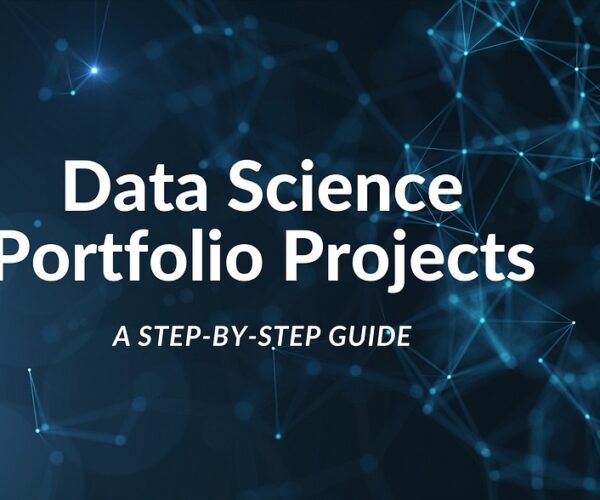If you want to get into the data science industry and further your career, you need a good portfolio. A degree or qualification is helpful, but a well-made portfolio is what gets you noticed. This detailed tutorial will walk you through every step of creating a data science portfolio that will impress hiring managers with your knowledge, experience, and abilities.
How Does Data Science Work?
Data science is all about discovering patterns, behaviours, interpretations, and conclusions in data in order to make educated business choices. A data scientist or science professional is someone who does these kinds of tasks. If you believe Harvard, data science is the world’s most desirable occupation and one of the most in-demand fields right now.
For What Reasons Should You Enrol in a Data Science Course?
The growing requirement for data scientists who can sort through digitalization’s mountains of data across all sectors has created millions of new data science jobs. The large supply-demand disparity has created many jobs and high wages. Data scientists are the most sought-after workers. Data scientists are in demand and data production is growing exponentially, making a career in data science profitable and gratifying.
Does Data Science Certification Make Sense?
Data science and analytics are creating many new jobs worldwide. Companies realised they needed historical data to make better judgements and expand. Digital technologies are helping all corporate departments generate and analyse data. Employment opportunities in data science and analytics are increasing quickly. Data scientist wages are among the highest in the industry due to a large skills gap between businesses and candidates. Internet data is growing, which bodes well for data scientists’ long and successful careers.
The Significance of a Data Science Course
The why must be addressed before the how can be discussed. There are several crucial functions that a data science portfolio should fulfil:
- The ability to apply your knowledge to actual situations is the first piece of evidence of competence.
- Set yourself apart from other candidates by presenting a portfolio that stands out.
- It gives you practical experience, which might make up for your lack of formal training in the field.
- Creating a portfolio promotes the importance of always improving one’s skills and knowledge.
- Showcase your skills and experience using your portfolio during interviews.
A Comprehensive Guide to Creating Your Data Science Portfolio
Get a Specialty
You must first choose your data science specialty or area of expertise before you can begin to construct your portfolio. Is a certain field, like healthcare or banking, more appealing to you than machine learning, data analysis, or data engineering? Showcase your hobbies and aspirations in your portfolio. You may make your initiatives more relevant and effective by settling on a speciality.
Gather Your Tools
You must have the proper resources in order to construct a data science portfolio. First and foremost, we have the following:
- Languages of Programming: R and Python proficiency is required. Data science initiatives frequently employ these languages.
- Learn the ins and outs of data science frameworks and libraries such as NumPy, scikit-learn, TensorFlow, and PyTorch.
- Mastering version control systems, like as Git, is essential for keeping tabs on project changes.
- You can make visually appealing data visualisations with tools like Matplotlib, Seaborn, and Tableau.
- Write up your projects and share your code with ease with Jupyter Notebooks.
Pick Projects Based on Actual Needs
Your portfolio should showcase your interests, abilities, and completed work. Take into account the following project types:
- Personal Projects: These projects are ones that you start on your own and demonstrate your enthusiasm for data science and creativity. Analyses of data pertaining to your interests or hobbies are one possible example.
- Open Source Contributions: If you want to show off your teamwork abilities and do good for the community, open source initiatives are a perfect fit.
- Kaggle Competitions: Show off your problem-solving skills while working on tough data science challenges by entering a Kaggle competition.
- The capstone project is a great way to round off a data science course and add it to your portfolio.
Keep Records of Your Projects
Your capacity to convey intricate concepts is demonstrated through a project that is both well-documented and easy to grasp by others. As part of your project documentation, you should:
- Project Overview: Describe the issue you’re addressing and why it’s important.
- Collecting Data: Explain where you found the data and how you got it.
- Data Preprocessing: Detail the procedures you used to tidy up and get the data ready for analysis.
- EDA, or Discoveries and Analyses: Share the data visualisations and EDA insights you have obtained.
- Modelling: Describe the statistical procedures or machine learning techniques that were employed.
- 6.Display the outcomes, including any visual representations or performance indicators, in section 6. Results.
- Jupyter Notebooks or GitHub repositories are great ways to share your code.
- Reflect on the project’s lessons learned and how you could improve future efforts.
Make Your Own Website
Although you may display your work on sites like GitHub, a personal website gives it a more polished appearance. On your website, you ought to have:
- Start with a short bio about yourself and your data science journey on the home page.
- On the Portfolio Page, showcase your completed work along with brief summaries and downloadable files.
- On the About Page, elaborate on your background, experience, and professional aspirations.
- Keep your contact information simple so that prospective employers can get in touch with you.
Data Science Course in Pune
ExcelR Solutions provide Data Science course in Pune is the most all-encompassing one available. The data science lifecycle includes gathering, cleaning, investigating, transforming, integrating, mining, constructing prediction models, visualising, and providing the solution to the customer. Data science training covers several subjects and technologies. Our Pune institute has placed over 400 Data Science students from E&Y, Panasonic, Accenture, VMWare, Infosys, IBM, and others. ExcelR Solutions provide the best data science training in Pune and the industry.
Meetings to Get Ready for Interviews
Our Placement Incubation Programme is designed to help participants get jobs when they finish our Data Science course and related projects. This training requires intensive Data Science interview prep for all participants. A large collection of data science interview questions and answers will be available. Each participant will have a data science SME to assess their knowledge and abilities, help with resumes, and conduct mock interviews. From participant placement to interview, our SMEs will assist with preparation. Tips on improving your LinkedIn profile and CV are also provided.
Conclusion
A data science portfolio can distinguish you from other applicants. It shows your devotion to the job and showcases your skills. A strong web presence that attracts companies may be yours with careful project selection, extensive documentation, and SEO portfolio modifications. Add additional projects and learning experiences to improve your portfolio. Your portfolio evolves with your data science career. I wish you the best of luck as you pursue a career in data science. ExcelR Solutions is always here to provide Data Science course in Pune.
ExcelR – Data Science, Data Analyst Course Training
Address: 1st Floor, East Court Phoenix Market City, F-02, Clover Park, Viman Nagar, Pune, Maharashtra 411014
Phone Number: 096997 53213
Email Id: enquiry@excelr.com






